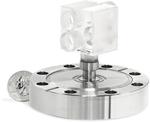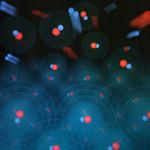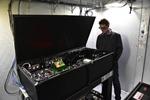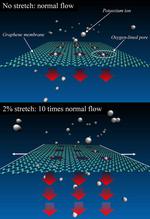Other

“In collaboration with industry, researchers from the National Institute of Standards and Technology (NIST) have made the first portable prototype of the Fixed-Length Optical Cavity (FLOC), a device that uses light to measure pressure with higher accuracy and precision than …

“JILA researchers have made a long-lived, record-cold gas of molecules that follow the wave patterns of quantum mechanics instead of the strictly particle nature of ordinary classical physics. The creation of this gas boosts the odds for advances in fields …

“Physicists at the National Institute of Standards and Technology (NIST) have flash-frozen a flat crystal of 150 beryllium ions (electrically charged atoms), opening new possibilities for simulating magnetism at the quantum scale and sensing signals from mysterious dark matter. Many …

“When vacationers buy a stake in a beachfront timeshare, they decide in advance who gets to use the property when. The National Institute of Standards and Technology (NIST) is helping the Federal Communications Commission (FCC) institute a similar plan for …

“The hunt for Earth-like planets, and perhaps extraterrestrial life, just got more precise, thanks to record-setting starlight measurements made possible by a National Institute of Standards and Technology (NIST) “astrocomb.” NIST’s custom-made frequency comb—which precisely measures frequencies, or …

“The field has narrowed in the race to protect sensitive electronic information from the threat of quantum computers, which one day could render many of our current encryption methods obsolete. As the latest step in its program to develop effective …

“Two unusual things happened on Nov. 16, 2018. Fifty-five nations from every continent (except Antarctica) agreed on something, and metrology, the science of measurement, was major news! On that day in Versailles, France, the world’s measurement experts voted to …

“By using light waves instead of electric current to transmit data, photonic chips—circuits for light—have advanced fundamental research in many areas from timekeeping to telecommunications. But for many applications, the narrow beams of light that traverse these circuits …

“Experimental atomic clocks at the National Institute of Standards and Technology (NIST) have achieved three new performance records, now ticking precisely enough to not only improve timekeeping and navigation, but also detect faint signals from gravity, the early universe and …

“Researchers at the National Institute of Standards and Technology (NIST) have conducted simulations suggesting that graphene, in addition to its many other useful features, can be modified with special pores to act as a tunable filter or strainer for ions …
